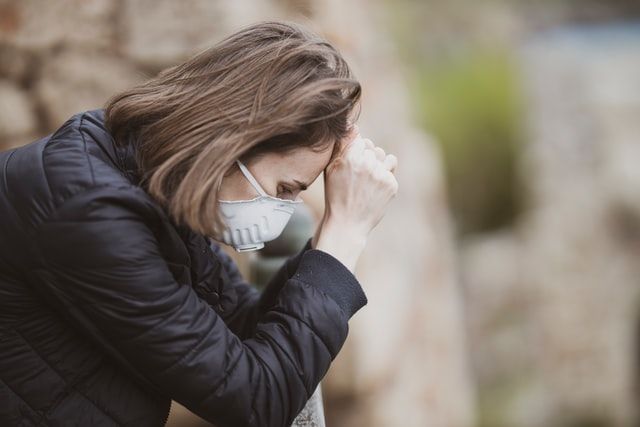
Preventing Long COVID
Nearly two years into the COVID-19 pandemic, you’re probably accustomed to hearing about the phenomenon of long COVID, or long-haul COVID. Perhaps you’ve been personally suffering from persistent COVID-19 symptoms, or you’ve been supporting a friend or family member with the elusive condition. Or perhaps you’ve just been keeping tabs on long COVID news headlines as scientists have raced to learn more about the nature of this illness.
Regardless of where you fall along the spectrum of long COVID awareness, information is power. Here’s what you need to know about long COVID and how to best protect yourself and your loved ones from contracting this agonizing condition.
Defining Long COVID
According to the U.S. Centers for Disease Control and Prevention (CDC), long COVID syndromes—also known as post-COVID conditions—refer to the sequelae that can follow an acute infection with the SARS-CoV-2 virus that causes COVID-19 disease. A diagnosis of long COVID can be made when you've had COVID-19 related symptoms that persist longer than 28 days from your initial infection.
New symptoms that develop more than four weeks after an initial COVID-19 infection also fall under the diagnostic umbrella of long COVID.
Who Gets Long COVID?
It’s puzzling because long COVID does not seem to be directly linked to the severity of a person’s COVID-19 illness. This means that anyone who has been infected with the SARS-CoV-2 virus can go on to develop a long COVID illness. Even people who have had an asymptomatic COVID-19 infection, or who’ve had very mild symptoms, can still develop a post-COVID condition.
Long COVID can happen in any age group, however, there seems to be a higher likelihood with increasing age. According to research published in the Journal of the American Medical Association (JAMA), about 26.6 percent of people ages 18 to 39 years old reported persistent COVID-19 symptoms 6 months after their infection. The researchers found that the percentage of post-COVID conditions increased to 30.1 percent for adults ages 40 to 64 years, and 43.3 percent for people ages 65 or older.
What Are the Symptoms of Long COVID?
One of the most confounding aspects of post-COVID conditions is that they can vary dramatically from one person to another. Some people with long COVID may have lingering symptoms that are directly related to their initial viral symptoms, the most common being fatigue or a loss of taste or smell. Other symptoms of long COVID may include persistent fevers, shortness of breath that interferes with daily activities, muscle aches or pains, brain fog (difficulty thinking or concentrating), rashes, heart palpitations, sleep problems, menstrual cycle changes, or mood changes, among many others.
According to the CDC, the inflammatory process that can accompany a COVID-19 infection can also trigger autoimmune conditions in many different organs throughout the body, such as the heart, kidneys, or brain.
What Are the Consequence of Long COVID?
Unfortunately, the fallout from a COVID-19 illness and subsequent post-COVID condition can be devastating. Medical scientists are still learning about long COVID and, according to experts at the Mayo Clinic, there is still a lot that is unknown when it comes to its long-term effects.
While some people have been able to go about their daily routines with minimal disruption—however, others have had a complete upending of their normal life. For this reason, long COVID afflictions are now officially recognized as disabilities under the Americans with Disability Act (ADA).
Can Long COVID Be Prevented?
It can be intimidating to learn about post-COVID conditions, particularly in an era of uncertainty regarding current COVID-19 variants. However, one protection strategy is becoming increasingly certain: The best way to avoid developing long COVID is to get fully vaccinated. In fact, a recent study performed in the U.K. showed that getting vaccinated against the SARS-CoV-2 virus can substantially reduce your risk of getting long COVID, even if you contract a breakthrough COVID-19 infection (one that happens after getting vaccinated).
Getting two vaccine doses can cut your risk of developing a post-COVID condition in half.
Moving Forward in a COVID-Entrenched World
There is a multitude of reasons why COVID vaccines are the best, safest way forward for almost everyone. Vaccines not only reduce your risk of contracting COVID-19 and spreading it to others, but they can also decrease the severity of your symptoms if you do get sick, including your risk of hospitalization. Beyond that, vaccines appear to be the most effective way to protect you from developing long COVID, making them a powerful tool in the fight against this perplexing illness.
Research and materials for this article were compiled, written, and distributed on behalf of the National Public Health Information Coalition. The views and opinions expressed in this blog are those of the various authors and do not necessarily reflect the official policy or position of the National Public Health Information Coalition or its members.
References:
[1] Post-COVID Conditions. https://www.cdc.gov/coronavirus/2019-ncov/long-term-effects/index.html
[2] Sequelae in Adults at 6 Months After COVID-19 Infection. https://jamanetwork.com/journals/jamanetworkopen/fullarticle/2776560
[3] COVID-19 (coronavirus): Long-term effects. https://www.mayoclinic.org/diseases-conditions/coronavirus/in-depth/coronavirus-long-term-effects/art-20490351
[4] Denied treatment, some Covid long-haulers could become lifelong-haulers. https://www.statnews.com/2021/01/28/stop-ignoring-undocumented-long-haulers/
[5] Guidance on “Long COVID” as a Disability Under the ADA, Section 504, and Section 1557. https://www.hhs.gov/civil-rights/for-providers/civil-rights-covid19/guidance-long-covid-disability/index.html
[6] Risk factors and disease profile of post-vaccination SARS-CoV-2 infection in UK users of the COVID Symptom Study app: a prospective, community-based, nested, case-control study. https://www.thelancet.com/journals/laninf/article/PIIS1473-3099(21)00460-6/fulltex

